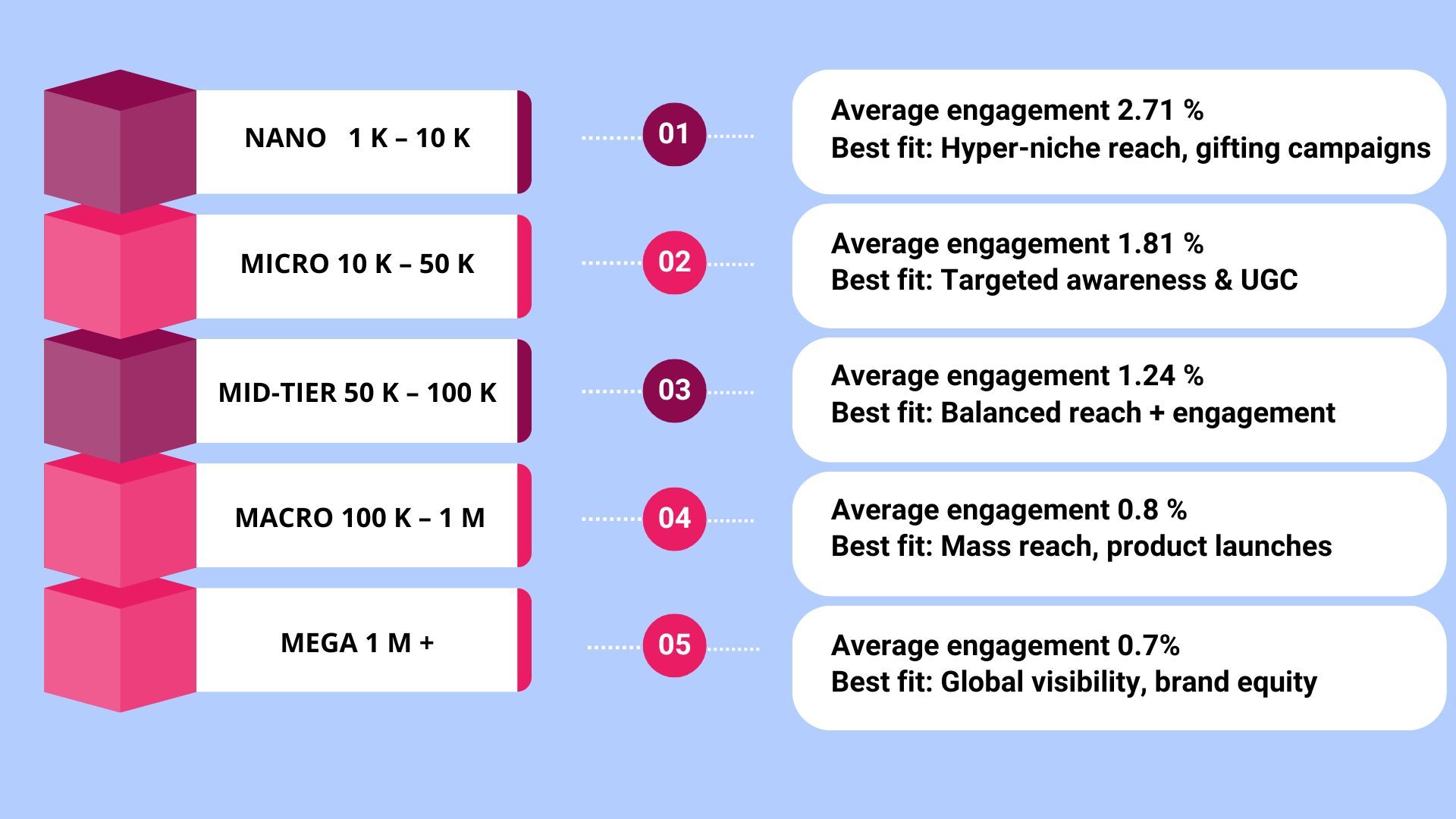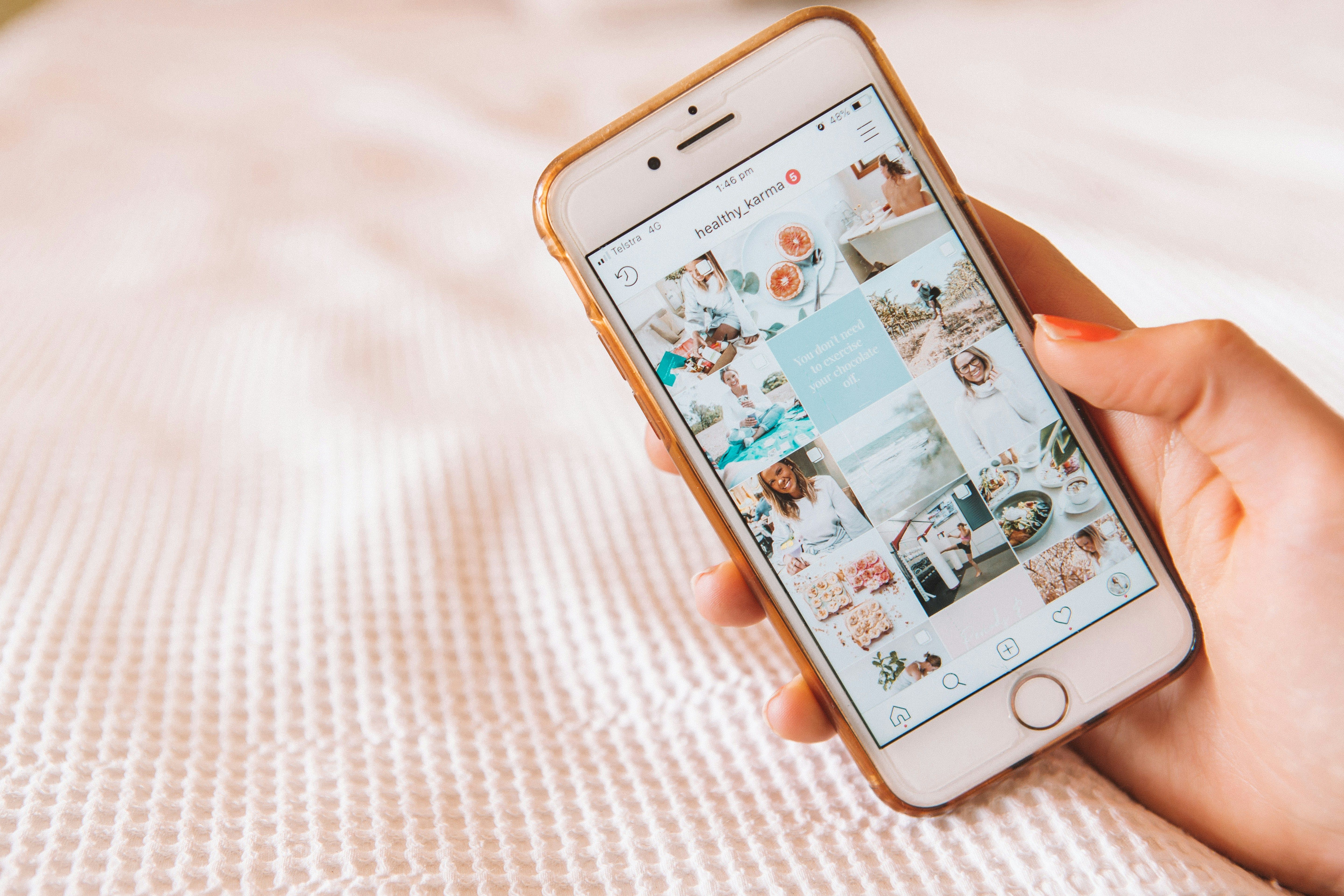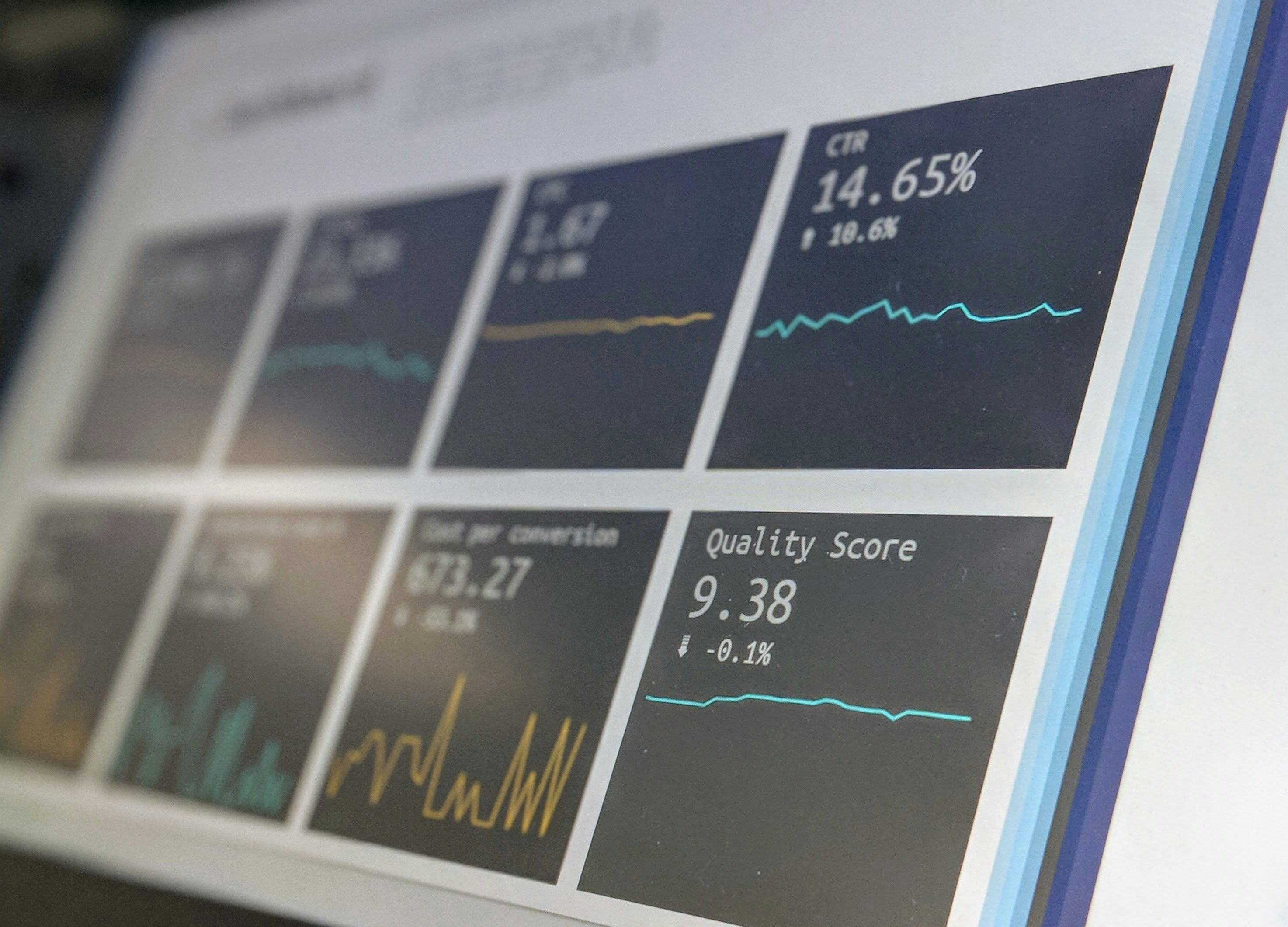There was a time when social media wasn’t about making money, it was just about connecting with people. Sharing moments, staying in touch, having fun. But today? It feels like almost every post is selling something in one way or another.
And honestly, that’s because it works. The influencer marketing industry is expected to hit $33 billion by 2025, more than double what it was back in 2019. Why the huge jump? Because people trust creators.
In fact, about 86% of shoppers say they’ve bought something because an influencer recommended it. It’s not about celebrities anymore. It’s about real people who feel relatable and content that feels honest, not scripted.
Consumers are tuning out polished ads and leaning into creators who look like them, talk like them, and actually use the stuff they talk about. That kind of trust leads to action.
McKinsey even found that 63% of people are more likely to buy from a brand if it’s recommended by a creator they follow. For brands, that means skipping the hard sell and teaming up with creators who can turn everyday content into real results.
1.What is influencer marketing? (And why it works so well)

Do you know the people you see on Instagram, TikTok, and YouTube? Well, influencer marketing is when brands team up with influencers to promote their products or services. But things are not that easy; it's not just about paying someone with a ton of followers to post a selfie with your product.
It matters to find the people who have influence within their audience. They've built trust through niche content, honest reviews, and staying consistent with their audience.
Why influencer marketing is important
Do you know what makes influencers recommendations so powerful and effective? Their trust!
But if you do it the right way, influencer marketing won't just create awareness. It also builds social proof, drives engagement, and even leads to sales. Whether it's a nano-influencer showing your product in their morning routine or a micro-creator doing a giveaway that gets people talking, this kind of marketing feels human, and it delivers real results in a noisy digital world.
Of course, not all the influencers are the same. Knowing their level helps you optimizing your influencer marketing campaign.
2. Influencer levels & engagement: Who really performs?
In the early days of social media, you were either a regular user or an influencer. There wasn’t much in between. But today, the creator space is more layered. Influencers come in all sizes, and each level brings something different to the table.

Nano-influencers (1K–10K followers)
These are everyday creators with small but loyal followings. What makes them powerful is trust: their audience actually listens, engages, and responds. With an average engagement rate of 2.71%, they’re ideal for hyper-targeted campaigns, product gifting, and building authentic word-of-mouth. Brands love working with nanos because the content feels real, not rehearsed.
Micro-influencers (10K–50K followers)
This is where scale meets influence. Micro-influencers still maintain strong engagement (1.81% on average) while offering a wider reach than nanos. They’re a sweet spot for brands who want relatable content, UGC, and strong ROI, especially in niche categories like wellness, fashion, or parenting.
Mid-tier influencers (50K–100K followers)
These creators offer more reach but start to lose the tight-knit feel of micro and nano communities. With an average engagement of 1.24%, they’re great for brands that want a bit more visibility without going full macro. Think of them as a bridge between intimacy and scale.
Macro-influencers (100K–1M followers)
Macros bring the numbers. With large, often diverse audiences, they’re ideal for big brand launches, seasonal promotions, or products with broad appeal. Their engagement drops to around 0.8%, but they make up for it with volume. Great for visibility, not always for deep trust.
Mega-influencers (1M+ followers)
This is celebrity-level territory. Mega-influencers are best suited for brand awareness at scale, think beauty, tech, or global campaigns. Engagement tends to be the lowest (around 0.7%), but if your goal is reach and name recognition, they can deliver massive exposure.
What does the data actually say? In our Influencer Marketing Report, we analyzed over 17,000 campaigns and found that nano-influencers delivered 50% more engagement than micro-influencers, and micro-influencers outperformed mid-tier creators by 46%. While macro and mega influencers offer broader visibility, their average engagement sits well below 1%, a stat consistent with third-party industry benchmarks. If your brand values connection over just clicks, nano and micro-influencers are where the real influence happens. Discover why they win in our full report.
All of this data makes one thing clear: influencer marketing works, especially at the nano and micro level.
But here’s the nuance most brands miss: it’s not about replacing traditional ads. It’s about enhancing them.
Let’s look at how influencer marketing and advertising work better together.
3. Why influencer marketing complements traditional advertising

Influencer marketing isn’t here to replace traditional ads, it’s here to fill the gaps those ads can’t quite reach. Paid media is great for things like reach, frequency, and keeping your brand message consistent. But creators bring something ads often struggle with: authenticity, niche targeting, and real community trust.
That’s why more brands are blending the two. They run performance ads to drive volume, and influencer content to build connection and credibility. When paired intentionally, the results are stronger across the board.
Here’s how creators bring extra value to your marketing mix:
- Authenticity drives conversions
Creator content feels like a recommendation, not an ad. Especially with nano and micro-influencers, the message lands more naturally, and followers are more likely to trust and take action. - Precision targeting without the guesswork
Instead of relying on ad audience settings, you can partner with creators who already speak directly to your ideal customer. Want to reach runners who eat plant-based? There’s already an influencer for that. - High-performing, reusable content
From unboxings and tutorials to day-in-the-life Reels, creators generate content that doesn’t just promote, it engages. And the best part? You can repurpose that content across your own ads, website, or email flows. - SEO and brand credibility boost
When people mention your brand organically, through influencer content, reviews, or story features, you generate backlinks, branded search traffic, and social signals that help your site in the long run. - Cost-efficient reach that scales
Based on data from Social Cat campaigns, gifted collaborations drive 12.9% more engagement than paid ones on average. You don’t always need a big budget to see real traction.
In short, influencer marketing doesn’t compete with your ad strategy, it completes it. Together, they create a full-funnel engine: ads bring the volume, creators bring the connection.
So, how do the most effective brands actually make it work? It all comes down to strategy. Here’s how brands do it.
4. What successful brands do differently in influencer marketing - influencer marketing strategy

You don’t need a celebrity budget or a full-time marketing team to make influencer campaigns work. You just need a smarter playbook. After reviewing thousands of successful campaigns (and a few that flopped), here’s what the brands getting real ROI do differently.
a. They know what they want (and write it down)
Vague goals = vague results. The best campaigns start with clarity:
Are you trying to drive traffic? Build buzz before launch? Get UGC for ads?
Write down your priorities, and choose KPIs that match (reach, engagement, EMV, conversions).
b. They get super specific about their audience
No, “women aged 20–40” isn’t a real target. The best-performing brands dig deeper:
“New moms interested in natural skincare who follow parenting content on Instagram.”
That’s the kind of targeting that leads to high-performing matches, and Social Cat’s filters can help you get that specific.
c .They don’t chase follower counts
They look at fit, not flex.
- Does the creator’s voice match your brand?
- Do they speak to your ideal customer?
- Are their comments full of real conversations, not just emojis?
The top brands prioritize audience alignment, not just reach. Nano and micro-influencers often outperform the big names, and our platform data proves it.
d.They pick the right format for the job
It’s not just “sponsored post or nothing.” Great campaigns mix things up:
- Product gifting to test waters
- Affiliate links for performance-based collabs
- Instagram takeovers to build connection
- UGC licensing for paid ads
- Story-only content for quick hitsSmart brands build creative stacks, not one-offs.
e. They trust the creator to create
No one wants to post from a script. Top-performing campaigns come from real voices, not rigid briefs.
These brands give guidance, but leave room for the creator’s tone, style, and personality to shine. The result? Content that feels real. Because it is.
f. They watch what happens, and use it to get better
Winning brands don’t just run campaigns. They analyze.
They check which content hit, which audience responded, and which influencers moved the needle.
Then they reuse the content, retest offers, and repeat what works.
g. Measure what matters
Don’t just count likes. Track the metrics that reflect your goals:
| Funnel stage | Metrics to track | Tools/tactics |
| Awareness | Impressions, reach, CPM | Creator posts + whitelisted ads |
| Engagement | Likes, comments, saves, EMV | Social Cat |
| Conversion | Clicks, sales, CPA | Unique UTMs / discount codes |
| Loyalty | Repeat orders, LTV | Post-campaign retargeting |
5. Influencer marketing by platform: What works best on Instagram, TikTok, YouTube

Do you believe it helps to be on all platforms? You don't have to be on every platform to have a successful influencer campaign. You only need to be on the right ones. Every channel has its own regulations, kinds of material, audiences, and ways of getting people to interact. Choosing artists that know how to speak the language of each area will give you the finest results.
a. Instagram
Instagram is still the most brand-friendly platform, and yes, it still works. But only if you do it right.
• Carousels are quietly crushing it (2.62% avg. engagement), especially when you teach, tell a story, or break something down.
• Reels get the reach, great for visibility, not always for deep interaction.
• Stories are your best friend for swipe-ups, flash discounts, and daily vibes.
Keep in mind, Instagram works best for brands in beauty, lifestyle, wellness, parenting, or anything that looks and feels good visually. It’s also great for user-generated content.
b. TikTok
It’s fast, messy, unpredictable, and incredibly powerful when done right. TikTok isn’t about being perfect. It’s about showing up like a real person and riding trends without losing your voice.
• Short-form video + quick edits = viral potential.
• Spark Ads let you boost organic posts natively, giving your best-performing content a second life.
This is where brands go to be human, not just “sell.”
It works best for Gen Z, low-polish UGC, product demos, brand challenges, niche storytelling.
c. YouTube
YouTube isn’t for quick wins. It’s for depth, loyalty, and real impact.
• Long-form tutorials, reviews, and vlogs give creators time to convince.
• Affiliate links thrive here, especially when the product fits into a larger narrative.
If you have a product that requires explanation, context, or comparison, YouTube delivers.
If you are in tech, education, finance, wellness, and anything with a learning curve, this is probably the best choice.
d. Twitch
Twitch is its own world, and if your product fits, it fits hard.
• Live demos, unboxings, and Q&As happen in the moment, with an active chat.
• You’re not just watching content; you’re part of it.
This isn’t for every brand, but if you’re in gaming, gadgets, music, or even snacks, it’s amazing.
Focus on it if you are in: gaming, tech, livestream collabs, limited drops.
e. Emerging Channels
• Threads is gaining traction for casual, community-style updates, think less “feed” and more “group chat.”
• LinkedIn Creators are becoming powerful voices in B2B, SaaS, and startup circles. If you’re targeting professionals, this is your play.
These platforms may not offer viral highs, but they can deliver credibility, conversations, and thought leadership, especially in niche verticals.
Perfect for founders, coaches, consultants, SaaS, and service brands.
Want help figuring out where your brand fits? Social Cat helps you match with creators on the right platforms, for the right audience, with the right vibe.
Assume for a second you’re starting from zero, you’ve heard about it, but what really matters is this: does influencer marketing convert? Can it actually drive revenue, not just likes?
Time to break it down.
6. Making influencer marketing convert

Influencer marketing isn't just for awareness. It drives the entire shopping journey, from scroll to checkout. Because of in-app tools and smarter ad strategies, creators are no longer just promoters, they’re part of your conversion engine.
Here’s how brands are turning influencer content into sales:
- Shoppable posts and in-app checkout flows
Platforms like Instagram and TikTok now let users shop without leaving the app. When creators tag products in Reels or Stories, your audience can move from discovery to purchase in a few taps. It feels seamless, because it is. - Live shopping and real-time collabs
Live streams are making a comeback, but with a twist. Creators can now go live with your product, answer questions, offer real-time demos, and link directly to purchase pages. It’s like QVC meets Gen Z. - Paid amplification (aka boosting your best content)
If a creator’s post is crushing it organically, don’t let it fade. Use whitelisting (or Spark Ads on TikTok) to boost the content from the creator’s handle, so it feels native, but reaches way more people. - Inventory + ad alignment matters
One lesson big brands have learned the hard way: if a post goes viral but your product is out of stock, you’ve just wasted a golden moment. Before you launch, sync your influencer campaigns with product availability and paid ad timing. That way, momentum turns into revenue, not missed opportunity.
Before jumping into influencer marketing, you must be sure you don't put your brand at risk. That’s where this next part comes in, your brand-safety checklist.
7. Regulation, disclosure & brand-safety checklist

Here’s what to keep in check:
- Disclose clearly, everywhere
The FTC requires influencers in the U.S. to use labels like #ad, #sponsored, or #gifted when promoting a product or service in exchange for compensation. Other regions, like the UK, India, and China, have their own versions, and the enforcement is getting stricter. When in doubt, be transparent. - AI and virtual influencers need disclaimers too
Audiences have a right to know when the face behind the content isn’t human. Cases like Lil Miquela, a virtual influencer with over 2 million followers, show that AI personas must also be upfront about brand partnerships. As AI-generated content becomes more common, clear disclosure matters more than ever. - Cover the essentials in your creator agreements
Even if you’re doing gifted collabs, always use a basic contract. It should outline: - What’s being exchanged (product, payment, or both)• Content formats and deadlines
- Usage rights (can you repurpose the post in ads?)
- How long the content should stay live
- Payment terms (flat fee, affiliate, gifting only)
Think of it as a safety net, for both sides.
At the end of the day, trust is everything in influencer marketing. That starts with being clear, fair, and respectful at every step, on screen and behind the scenes.
Also, being ahead of the game can bring some serious results. Let's see some of the things we can expect in the future.
8. Future trends worth betting on

What started as shoutouts and selfies has grown into a multi-billion-dollar industry that’s getting smarter, more creative, and more community-driven by the day. If you’re building a strategy that lasts, here’s what to keep your eye on:
- AI is making discovery smarter (and safer)
Did you know that brands are already using AI to match with creators more efficiently? The real shift is in fraud detection. More and more platforms will use machine learning to spot fake followers, suspicious engagement, and off-brand behavior before campaigns go live. For now, you can use our engagement rate calculator.
- Virtual influencers are becoming mainstream
It might sound futuristic, but CGI creators like Lil Miquela are landing real brand deals. These “non-human” influencers are controlled by teams, follow brand scripts precisely, and never miss a posting deadline. Weird? Maybe. But brands love the control and consistency.
- Ambassador programs are replacing one-off posts
Quick collabs are fine, but long-term partnerships build real brand loyalty. More companies are moving toward creator ambassador models, where influencers become part of the brand’s journey over time. The result? More authentic content and deeper community trust.
- Niche platforms are the next frontier
Not everything has to happen on Instagram or TikTok. Discord, Substack, and even private Slack groups are becoming hubs for micro-communities. These spaces allow brands to co-create with influencers, host product drops, gather feedback, and build something beyond the algorithm.
Influencer marketing will keep shifting, but one thing won’t change: people trust people. If you build your strategy around real creators, real communities, and real value, you’ll always stay ahead of the curve.
Table of content
- 1.What is influencer marketing? (And why it works so well)
- 2. Influencer levels & engagement: Who really performs?
- 3. Why influencer marketing complements traditional advertising
- 4. What successful brands do differently in influencer marketing - influencer marketing strategy
- 5. Influencer marketing by platform: What works best on Instagram, TikTok, YouTube
- 6. Making influencer marketing convert
- 7. Regulation, disclosure & brand-safety checklist
- 8. Future trends worth betting on
Looking for influencers?
Table of content
- 1.What is influencer marketing? (And why it works so well)
- 2. Influencer levels & engagement: Who really performs?
- 3. Why influencer marketing complements traditional advertising
- 4. What successful brands do differently in influencer marketing - influencer marketing strategy
- 5. Influencer marketing by platform: What works best on Instagram, TikTok, YouTube
- 6. Making influencer marketing convert
- 7. Regulation, disclosure & brand-safety checklist
- 8. Future trends worth betting on










